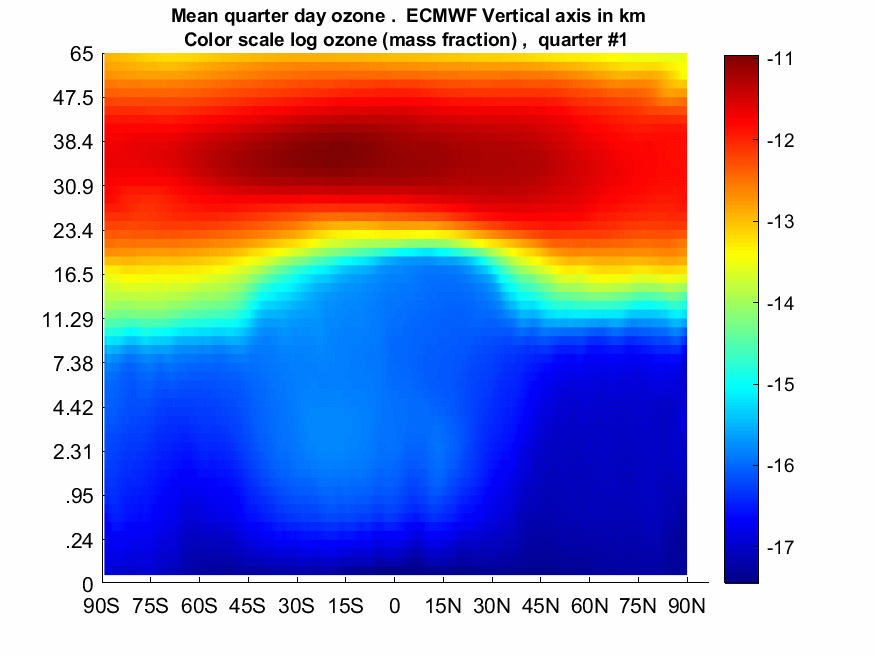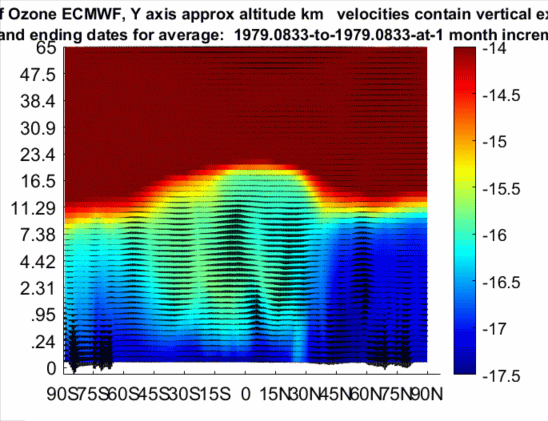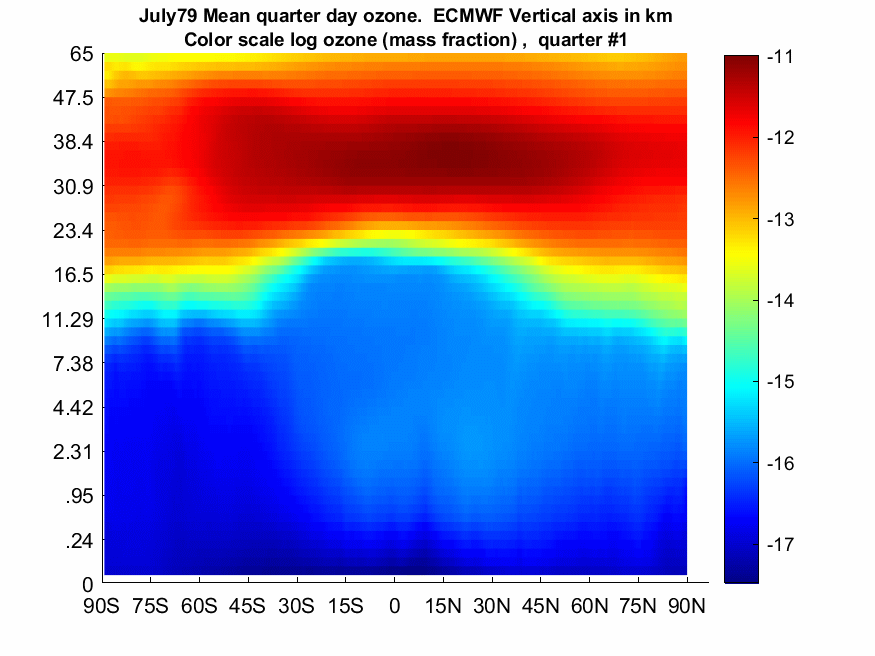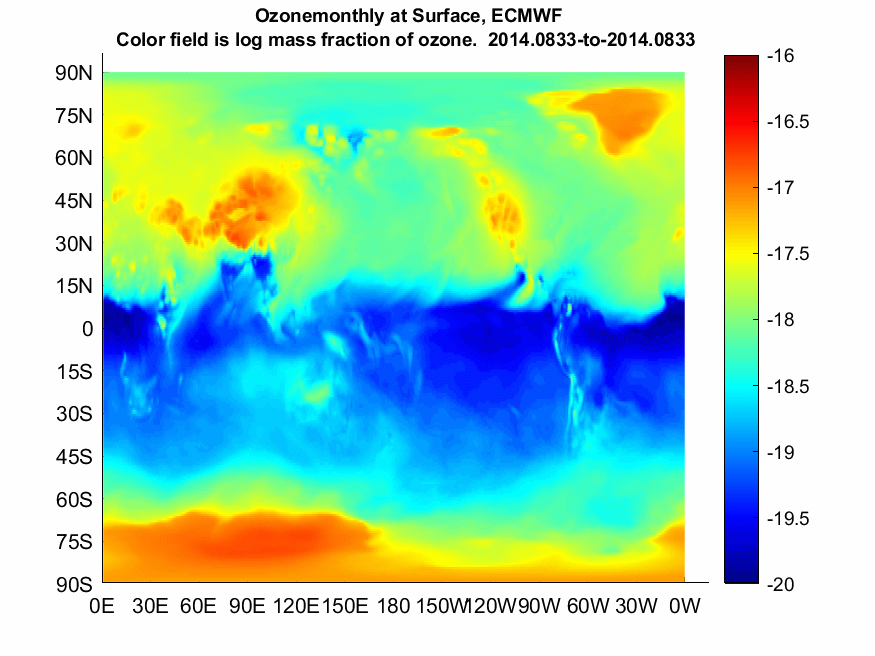Experts in atmospheric ozone must tiptoe around giant obstructions to maintain a narrative that their efforts to date are to be credited for halting the depletion of UV-protecting ozone over the past several generations. I continue to observe apparent indifference to the connections between Water and ozone, including this doctoral thesis “OZONE AND WATER VAPOR MEASUREMENTS BY RAMAN LIDAR IN THE PLANETARY BOUNDARY LAYER” (Benoît LAZZAROTTO, 2001). This work focuses rather on details of observing concentrations of both through LIght Detection and Ranging (LIDAR) techniques.
The paper does cite C.E. Junge’s work on “Global ozone budget and exchange between stratosphere and troposphere” (1962) to note in passing that for many years scientists believed tropospheric ozone leaked there from the stratosphere, where solar high frequency UV produces it in the first place. Now, this notion appears to have been downplayed in favor of more spectacular CFC claims. Even that Junge paper doesn’t appear to question how ozone is removed in any great detail. Still, it does recognize that ozone is removed within the troposphere. I can certainly help now, much later to suggest that Water is the culprit.
But in any case, Junge had to interpret this leakage of ozone from stratosphere to troposphere based on hardly any data at all, at least compared to the abundance of ozone data now. And as the featured animation appears to corroborate, through the dynamic light streaks that pour down towards the surface, Ozone leaks into the troposphere 24/7. That animation covers ECMWF satellite data for the first 20 days of 1979. Each day is captured by 4 quarterly frames.
These profiles cover the full globe. Each pixel is an average value across all longitudes. This information set is quite rich and also happens to be corrosive to the ozone hole narrative. Note the basic pattern of high ozone in red within the stratosphere and low ozone in blue below that. Again, the ozone dribbles and even pours down a bit every hour of every day. You will also see an almost imperceptible shift to the right of the core (dark red) ozone lens of the stratosphere, that is expected to be tightly coupled to Earth’s tilt and orbit. And the ozone-free zone in dark blue, where moisture is most prevalent, advances as a slow-motion wave. Keep in mind that these are fine scaled, shorter time frame reprsentations of my earlier animation sets such as this one for ozone sloshing over the entire year of 1979:
Nothing about this is recognized or described in contemporary ozone science literature. It must take a great deal of determination to disregard the beauty and the scientific implications of this dynamic. It seems appropriate to postulate an alternate and more natural Ozone Cycle here as well. The existing version of an ozone cycle, known as the Chapman Cycle, appears to not align to anything related to the above, except perhaps the creation of ozone in the stratosphere by UV radiation. The Chapman Cycle “breaks down” on the destruction side of things. Here’s a typical source to explain that cycle. The ChemLibre sites does a great job I bet of describing the 4 steps of Ozone creation as Chapman saw things. But they have all of the action limited to the stratosphere. And honestly, the last step seems as if it could go either way. And once again, that theory claims that anthropogenic CFC molecules, which are over five times heavier than air, somehow defy gravity and strong winds to hover over Antarctica for decades.
Those limitations and physics violations are show-stoppers in my view. Why not track the cycle of Ozone through the entire atmosphere? Here goes for the AbeqasDotCom Ozone Cycle:
- Solar radiation photolyzes oxygen (O2) within the stratosphere.
- Free oxygen (O) recombines as ozone (O3) within the stratosphere.
- Stratospheric Ozone (O3), which is about 70% heavier than air, sinks through the tropopause, into the troposphere, where the ozone reacts with Water (H2O), leading to common end products water, oxygen and hydroxides.
There, I’ve perhaps managed to:
- Expand the scope of the cycle to cover the whole Earth, and
- Reduced the number of steps from 4 to 3, and
- Dispensed with the nonsensical, physics-challenged, virtue-shaming CFC role
Perhaps H2O in the stratosphere is part of the oxygen feedstock for the UV fire to generate all of that stratozone. Then the loop is somewhat more complete, and hydrologically conceptually satisfying. Where’s my Nobel Prize??
Here is a July 1979 animation of global quarter-day ozone covering again the first 20 days of the month. The profiles are symmetrically reversed from the top animation, as one would expect.
FORECASTING IMPLICATION
Specific Humidity is another parameter I can share in drafty exuberance over the first 20 days of Jan 1979,
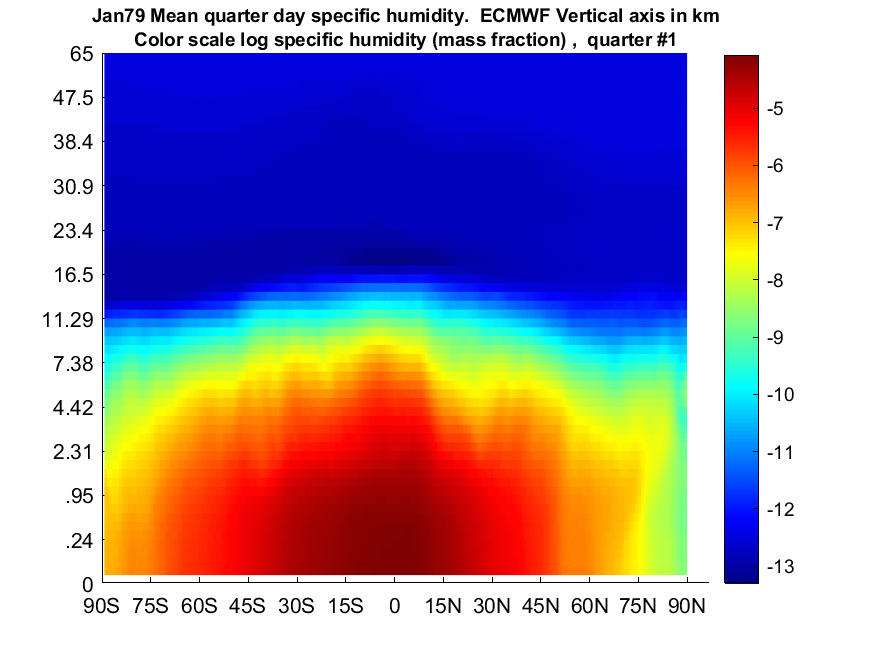
For ozone hole assertions to persist, it seems necessary but perhaps not sufficient for the practitioners to run global circulation models which capture the hydrogeostrophic dynamics of all of the time series above, with the exclusive deployment of their CFC framework. The same fidelity expectations would also apply towards CO2 circulation and accounting.
And fidelity must be achieved without compromise. In other words, a profile match isn’t much good if you can’t match the surface condition as well. Here’s an example of the monthly surface ozone pattern over the year of 2014.
All rights reserved contains drafts and opinions and facts.
 5995total visits,2visits today
5995total visits,2visits today
